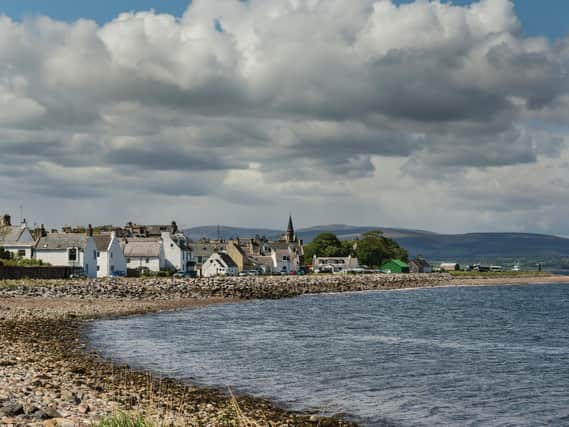Area focus: Cromarty


Overlooking the Cromarty Firth on the Black Isle peninsula, the small Highland town of Cromarty – the name of which derives from the Gaelic for “crooked” and “bay”, is inextricably linked with the sea.
Its spectacular coastal panoramas and seafaring history are written into its idyllic townscape. Combined with its winding streets and marine wildlife, the town is a particular draw for house buyers seeking a property in a small coastal location.
Advertisement
Hide AdAdvertisement
Hide AdThe average price of a property in Cromarty has risen by 5.14 per cent in the last year to £206,302, showing its enduring popularity. According to Zoopla, flats in the town sold for an average of £116,021 in the last 12 months, while terraced houses sold for £198,571.
The town of about 700 residents is a picturesque settlement of old red stone and white-washed fishermen’s cottages, intertwined with Georgian merchant’s houses and more than 200 listed buildings.
It can be traced back to the 13th Century, when it was a royal burgh protected by Cromarty Castle, and the town has thrived ever since on its fishing and port trade.
Much of its development is thanks to businessman George Ross of Pitkerrie, who was the sole owner of Cromarty Estate by 1772.
Ross paid for the construction of Cromarty’s harbour, built between 1781 and 1784, as well as hemp cloth and rope factories which employed many in and around the village.
In the 18th and 19th centuries, Cromarty became an important port, exporting produce from farms across the region over the North Sea, rivalling Inverness. By the 1830s, the town’s population had swelled to more than 2,000.
Improved transport links, however, put the harbour into hiatus, resulting in a decline in the town’s population.
In 1912, the Cromarty Firth became a naval base and its harbour provided anchorage for the Royal Navy during both world wars.
Advertisement
Hide AdAdvertisement
Hide AdMore recently, the Cromarty Firth has been associated with Scotland’s oil industry, with Nigg and Invergordon famed for their oil rig construction yards.
Former factories, such as the Marine Terrace Hemp Works, which once imported hemp from St Petersburg and was later used as a hospital, have been converted into houses and flats, for residential and holiday home use.
Marine Terrace sits on the south coast of the Cromarty Firth and offers spectacular coastal views. The average price of a property here over the last five years was £156,430.
One such property is The White House. This four-bedroomed detached house is steeped in history, having been built by Tay Bridge engineer Willie Logan and previously put to use as a doctor’s surgery.
The house is filled with attractive Art Deco features, and its ground-floor sitting room includes a veranda leading out to a spacious garden, while a first-floor lounge takes advantage of spectacular views with French doors into a sunroom. It was recently put on the market at offers over £350,000
The nearby Bayview Crescent and Townlands Park are quiet residential areas, featuring semi-detached and terraced houses, with gardens and ample parking.
Those seeking a larger, more contemporary home with a higher price tag, should look towards Urquhart Court, a small cluster of modern detached houses. The most recent sale of a property here was for more than £448,900.
The town’s primary years’ education is provided by Cromarty Primary School. The local secondary school is Fortrose Academy, a 15-minute drive from the town, while Invergordon Academy is a 40-minute drive. The nearest independent school is Gordonstoun School, in Elgin.
Advertisement
Hide AdAdvertisement
Hide AdA number of attractive farm houses and quaint rural cottages can be found scattered around the town for intrepid buyers interested in remote living.
A message from the Editor:
Thank you for reading this article. We're more reliant on your support than ever as the shift in consumer habits brought about by Coronavirus impacts our advertisers.
If you haven't already, please consider supporting our trusted, fact-checked journalism by taking out a digital subscription.